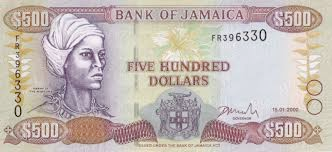by Ruma Chopra
My recently published essay in Acadiensis, “Maroons and Mi’kmaq in Nova Scotia, 1796-1800,” studied the relationship between a group of deported ex-slaves from Trelawney Town (Jamaica) and the Mi’kmaq during an era of European imperial warfare. The archives drew me to consider the two groups’ entanglement within a world created by white and black loyalist migrants, and imperial rules. I wanted to reflect on the intertwined lives of people who had very different histories, yet who would – for about four years – share a range of similar experiences. I was taken by how their experiences resonated with one another but also the ways in which their futures diverged. Both groups had military skills, both were seen as family-based communities, both had long experiences adapting to European exigencies. The Maroons, benefiting from the anti-slavery attention, left for Sierra Leone, hoping to transform into British colonizers. The Mi’kmaq struggled to hold their land against colonizers.

Maroon leader, Nanny, on Jamaica’s $500 bill.
There is a tension shared by scholars who work on black history and indigenous history – perhaps not dissimilar from the concerns shared by those who work on Atlantic Canada in general (Three years ago, Jerry Bannister’s “Atlantic Canada in an Atlantic World? Northeastern North America in the Long 18th Century” raised important questions about the limits of the Atlantic framework.) On one hand, there is a shared history with the imperial and Atlantic world. There is also a history shared with the U.S. South. (In some narratives, the Caribbean has become simply an extension of U.S. plantation history.)
On the other hand, there is a distinct separate history, not shared, and rooted in the local. For the Maroons, there is food and music and language that is related to being an island, to being part of a certain kind of slave migration. Every cultural act cannot be reduced to an act of opposition. And, as scholars such as B. W. Higman and Verene Shepherd have shown, there was a Caribbean world unrelated to the sugar plantation complex, that does not answer to a framework based on the effects of the “sugar revolution.”
When I started working on the Trelawney Town Maroons, I hoped, somewhat presumptuously, to give voice to a Maroon vision of the world. Perhaps I imagined a “Maroon section” in the local bookstore – or an Amazon category. As I worked on the longer book project, I considered what it would mean to imagine a “Maroon History of the Atlantic World.” Would we see negotiations and adaptability instead of only the structures of oppression and exploitation?
But after spending years in the archives, I am less sure we want to see a “Maroon section.” As Percival Everett recently noted, we don’t, after all, seek a “White Male Books section.” The experiences of the Maroons and the Mi’kmaq, were as wide as varied as the experience of British travelers, overseers, or servants. The goal is not to capture a “Mi’kmaq” or a “Maroon” voice but to find ways to represent the universe of experience as lived by people who did not leave autobiographies, paintings or long poems. The history is not easily accessible when looking at the conventional sources – the British PRO, Assembly Records, and the like. What we are able to access we assume to be representative; one long-held plantation records we assume speak to the larger world of plantations. The serial relocations of the Trelawney Town Maroons – from Jamaica to Nova Scotia to Sierra Leone – we assume capture something about the “essence” of being a black outcast in a plantation society. But we just don’t know.
Ruma Chopra is a Professor in the Department of History at San José State University. Her newest book, titled, Almost Home: Maroons Between Freedom and Slavery in Jamaica, Nova Scotia and Sierra Leone (Yale University Press, 2018), examines the ordeal of the Trelawney Town Maroons in three British imperial zones during the late eighteenth and early nineteenth centuries. See more on www.rumachopra.com. You can also find her on Twitter @RumaChopra.
Works Cited
Jerry Bannister, “Atlantic Canada in an Atlantic World? Northeastern North America in the Long 18th Century,” Acadiensis XLIII, no. 2 (Summer/Autumn 2014).
Percival Everett, The Paris Review, (Summer 2017).




Pingback: Canadian History Roundup – Week of November 5, 2017 | Unwritten Histories